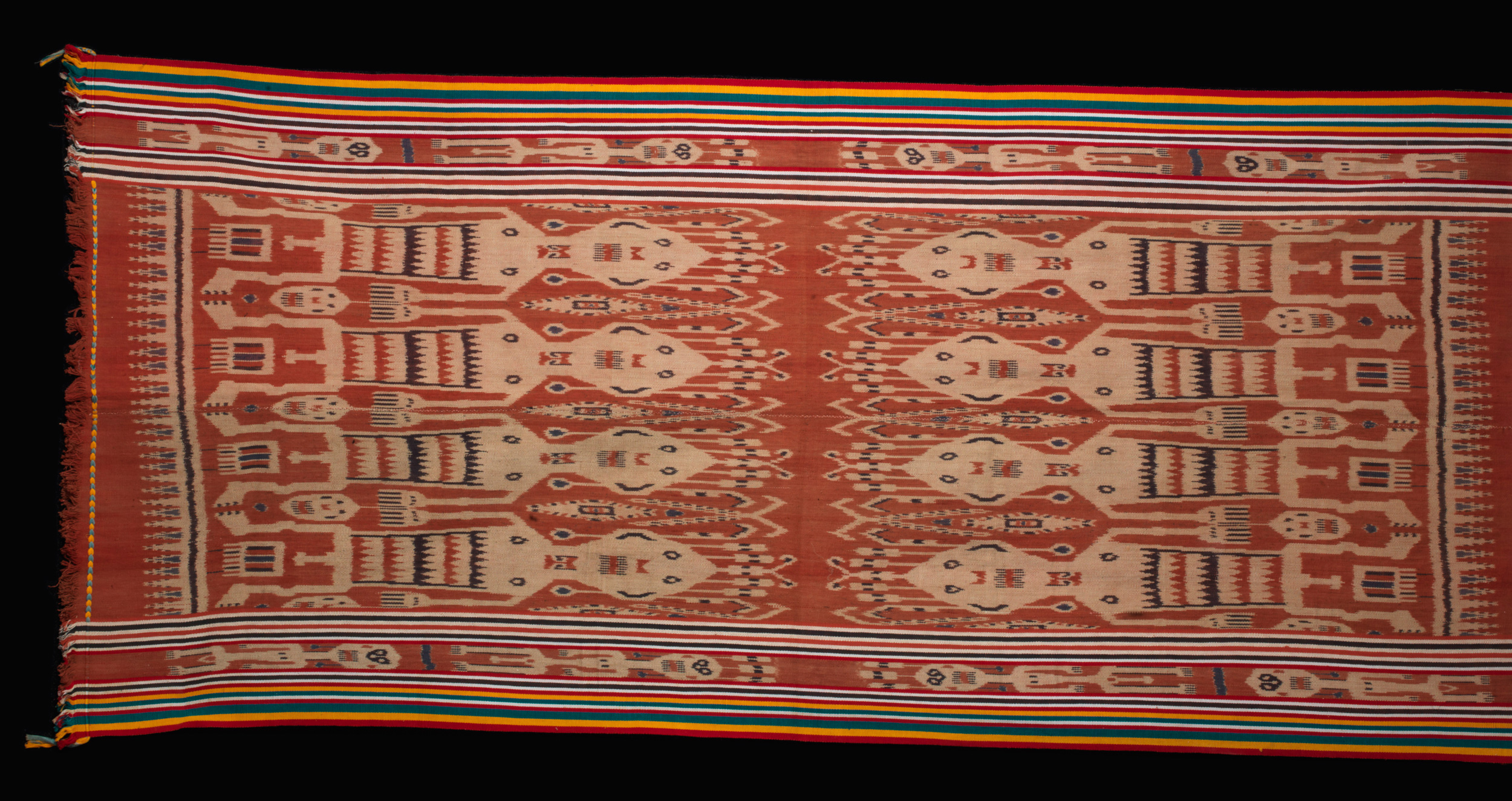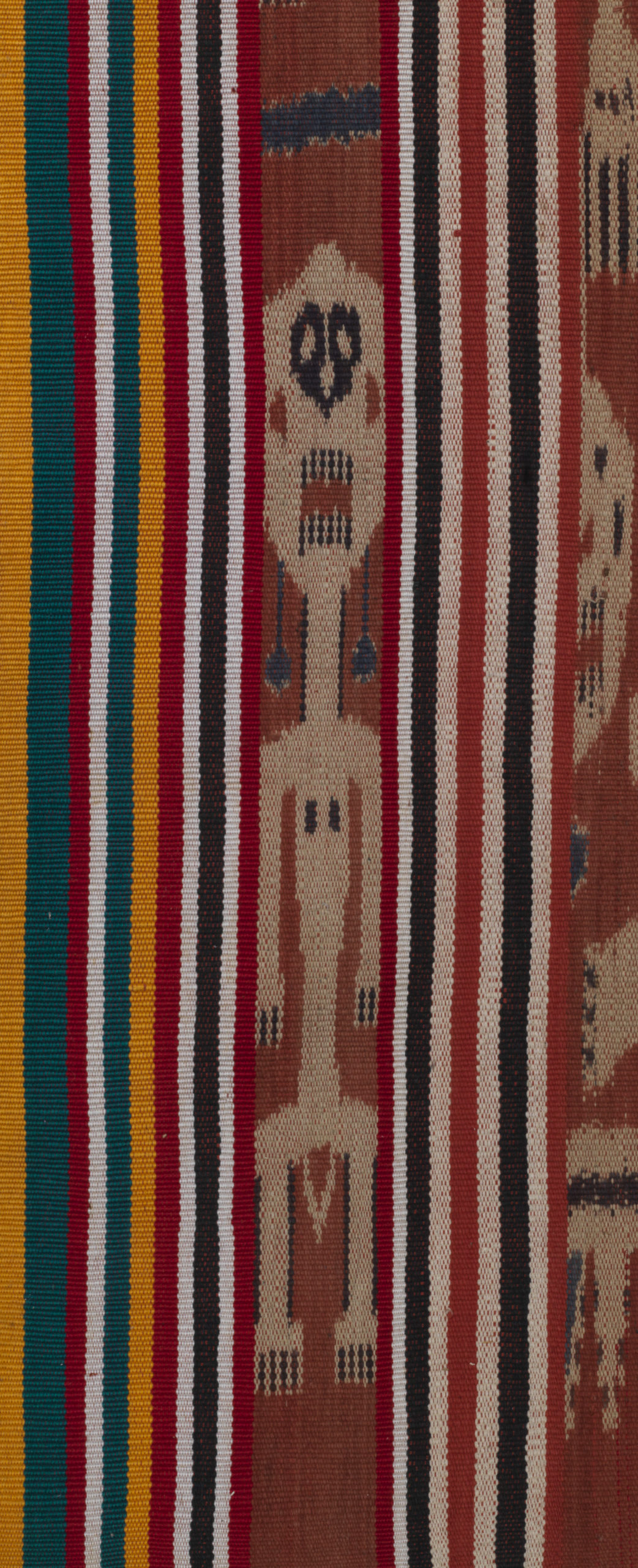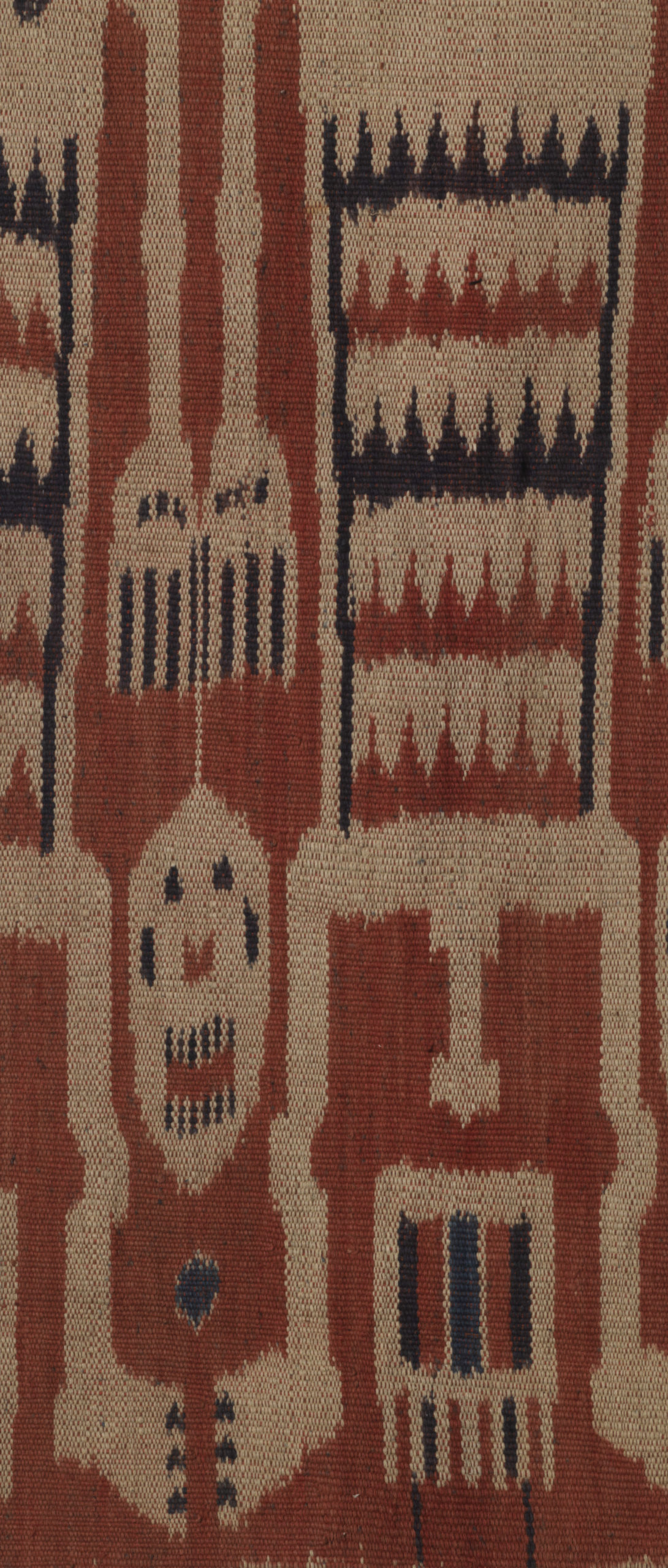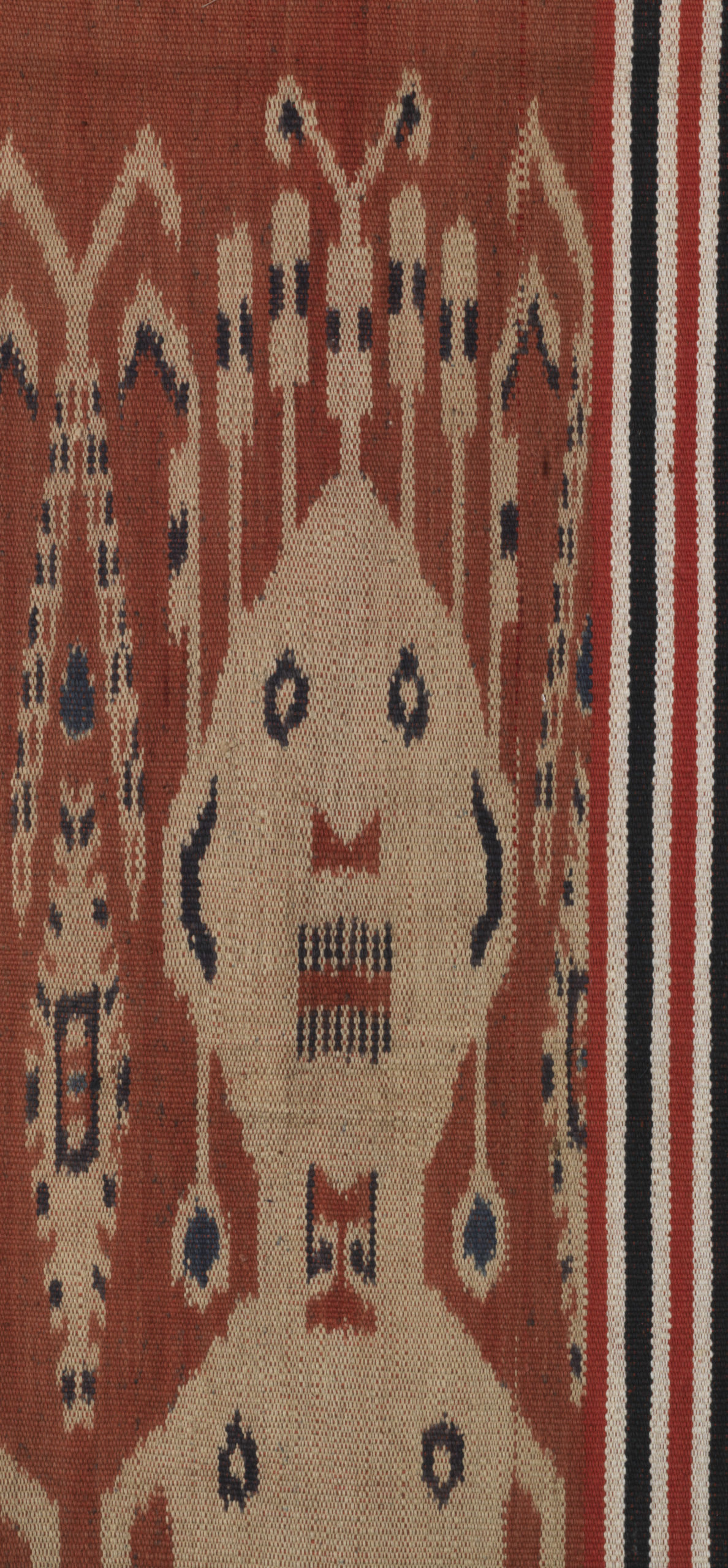Ceremonial textile “pua”
| Object | Ceremonial-textile „pua“ |
| Culture | Iban Dayak, Sarawak, Borneo, Malaysia |
| Time | Around 1930 |
| Dimensions | Length 226 cm, width 100 cm |
| Material | Cotton dyed in Ikat technique |
The ritual fabrics play an important role in the life of the people of Borneo.
Puas are carpet-like showpieces, which are often, as in this example, made of two webs of weaving, as the Dayak women do not have wide looms. The pua are said to have magical powers and e.g. at initiation and wedding ceremonies the main characters are wrapped in pua. At rice planting and harvest festivals the offerings to the gods are wrapped in pua so that they are graciously accepted.
On this pua textile six Dayak warriors are depicted, in half of the textile three are facing upwards and three downwards. The warriors are dressed in a breastplate in jagged lines and each of them holds a skull trophy in their hands. They wear helmets as headgear, decorated with tail feathers of the hornbill, and earrings with pulled down earlobes. Four women and four men each with pronounced genital areas are woven into the edges.
The fabric is made of cotton and dyed in the ikat technique. This means that the warp threads are tied and dyed before weaving, only then is weaving commenced.
The term ikat is derived from the Malaysian word mengikat and means something like wrapping or binding. In contrast to batiks, the ikat technique does not involve the binding of a surface, but instead the woven yarn.
Supplementing Literature Back to room view






